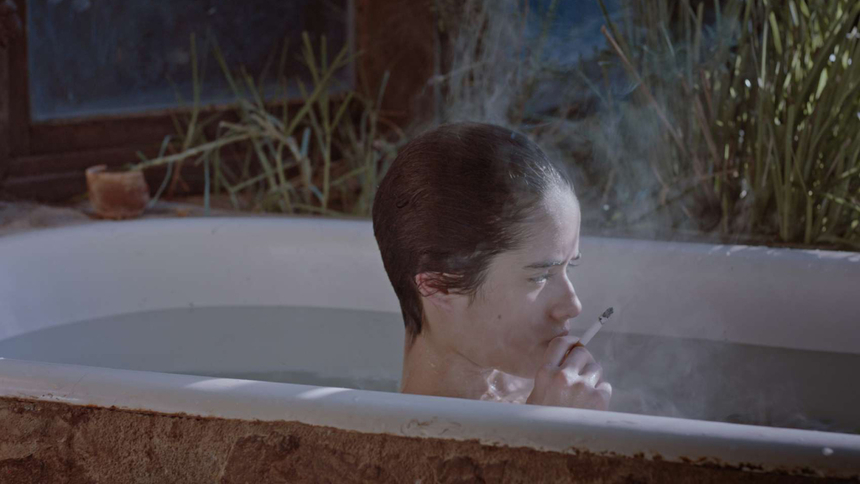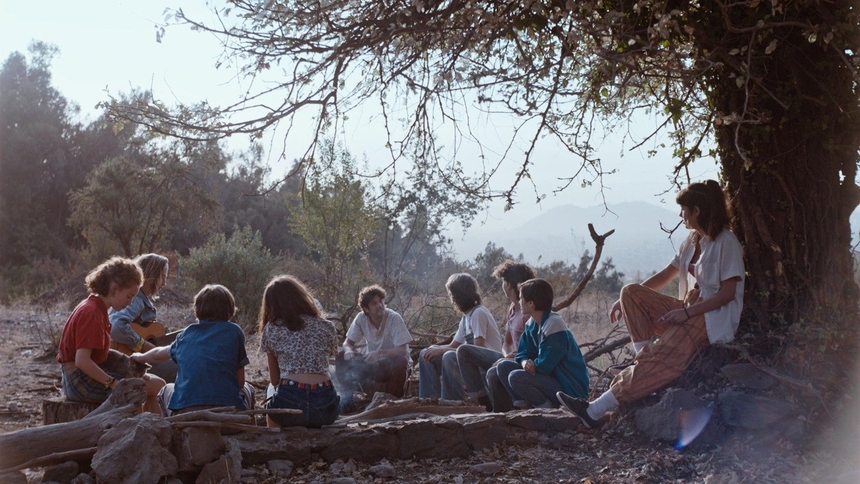Review: TOO LATE TO DIE YOUNG, Hazy, Coming-Of-Age Mood Piece of a 90s Chilean Summer

Dominga Sotomayor’s Too Late To Die Young is a coming-of-age drama that takes place during the halcyon summer of 1990 in Chile, a time when the nation was slowly emerging from the shadows of a violent military regime. Against a changing political climate, the film follows 16-year-old Sofia (Demian Hernández) as she navigates the waters of adolescence and approaching adulthood. A hazy mood piece frequently bathed in pallid sunlight, Too Late To Die Young is deliberately mystifying at times, with Sotomayor choosing to focus on re-creating the hopeful and tentative atmosphere of that period, at the expense of a narrative with more direction. Still, she manages to interweave the teenage growing pains of heartbreak, disappointment and reconciliation with the uncertainty of a post-Pinochet Chile in artful and elegant fashion.
Sofia, her father and her younger brother are members of a rural hippie commune who have chosen to strike out on their own at the foot of the Andes, located in the outskirts of the city. Their natural abode impresses as an Eden of sorts: nestled in the mountains, surrounded by lush forest and waterfalls, clustered Bohemian-style wooden huts for houses, and even a treehouse to boot.
Like their nation, the community, mostly composed of artists and musicians, is still trying to find its footing – the inhabitants haven’t figured out how to get electricity or a constant supply of potable water – but the atmosphere is carefree and laidback, endorsing a stripped-down way of living that encapsulates Chile’s newfound sense of freedom and democracy. Revelry is thick in the air; communal dinners, parties, and dancing are round-the-clock – they live as they wish, with their own rules and at their own pace.
On a micro-level, Sofia, too, is determined to make her own decisions. She yearns to move away and live with her distant mother, a famous singer who has been largely absent in her life. Stubborn and reticent, Sofia is in the throes of teenage rebellion: she smokes heavily, openly defies her father’s authority and seeks the company of the more liberal, flighty adults, who aren’t exactly the best role models. Her closest pal in the community is the loyal Lucas (Antar Machado), who clearly has feelings for her, but Sofia is drawn to the much older Ignacio (Matías Oviedo). Another character who gets quite a bit of screen time is 10-year-old Clara (Magdalena Tótoro), whose dog Frida keeps running away.
The lead-up to a New Year’s Party eventually serves as the catalyst for the unravelling of buried emotions and painful truths about family and love. Much of Too Late To Die Young is about how some of our long-held perceptions turn out to be illusions, and about coming to terms with those in our midst who fail to live up to our own ideals. These revelations are unearthed without drama, manifesting as a slow, gradual awakening on Sofia’s behalf. Her solitary moments are the most effective in betraying the cracks in her steely carapace, like when she’s standing alone on a crowded dancefloor, or bathing on a rock under a cascading waterfall. A plangent rendition of "Eternal Flame" on stage during the New Year’s Party is when her vulnerability finally and fully comes through, in one of the film’s rare close-ups.
There’s a pervasive restlessness in Too Late To Die Young; characters are always on the road, mostly captured through front and rear-view windows of vehicles by Sotomayor’s lens (the film opens with a shot of Sofia’s brother languidly sleeping in the backseat of a car); if Sofia isn’t behind the wheel of the family vehicle, then she’s riding pillion on Ignacio’s motorbike as they zip across dusty roads. Accompanied by a hypnotic indie pop soundtrack and desaturated visuals courtesy of Inti Briones’ fine cinematography, there’s a sense of the ephemerality of childhood and youth, and by extension, of how long the current status quo and historical liberty might last.
With the film’s recurring peripateticism, there’s the idea that nobody in the community is truly settled down, not least Sofia, who is impatient to explore the pleasures and vices that come with independence. Relations across the community are complex; interest and affection at times unreciprocated – a crush from afar, desire for parental love, a pet that doesn’t seem quite right. Yet if there’s one point that the film’s metaphorical, full-circle ending – a long tracking shot of Clara’s dog scampering gainfully into the distance – could be trying to make when it comes to human relationships, it might be this: if you love someone, then set them free.


Do you feel this content is inappropriate or infringes upon your rights? Click here to report it, or see our DMCA policy.






